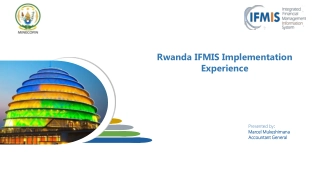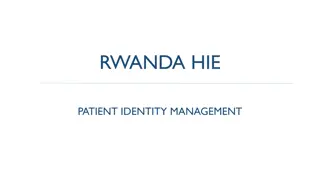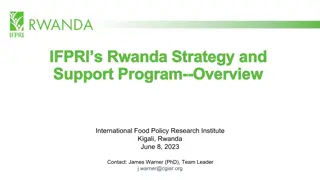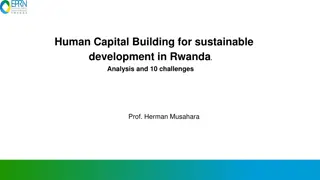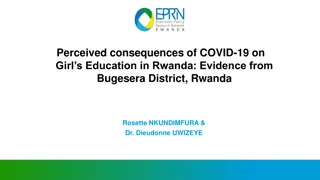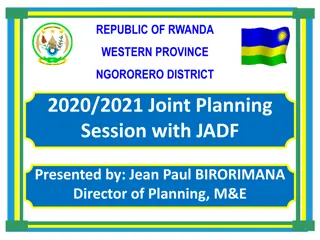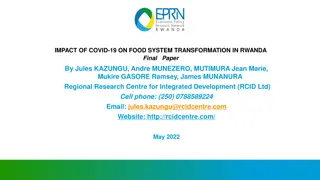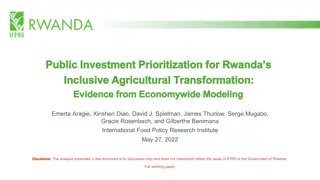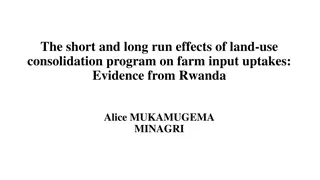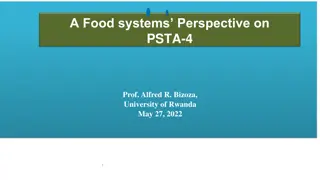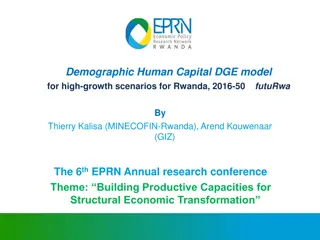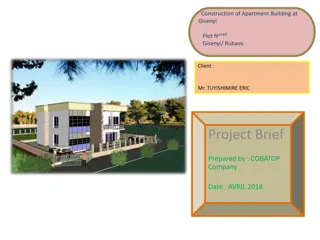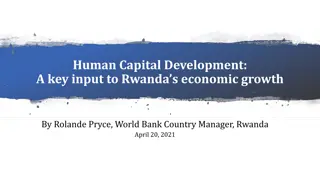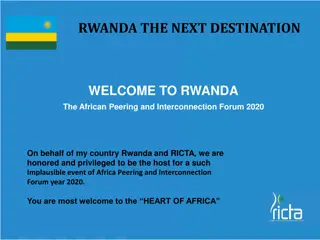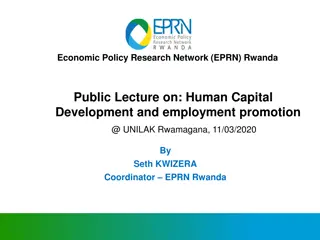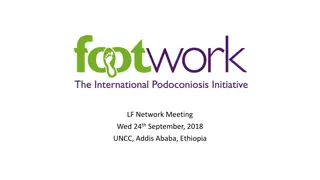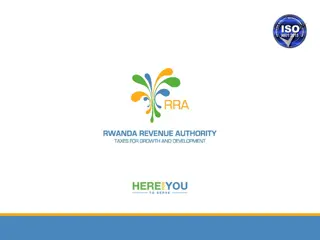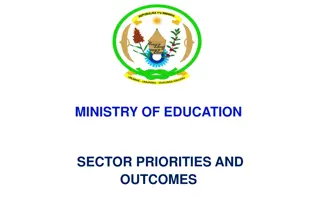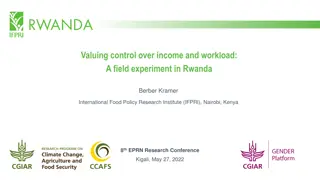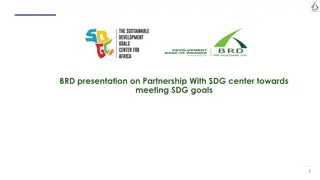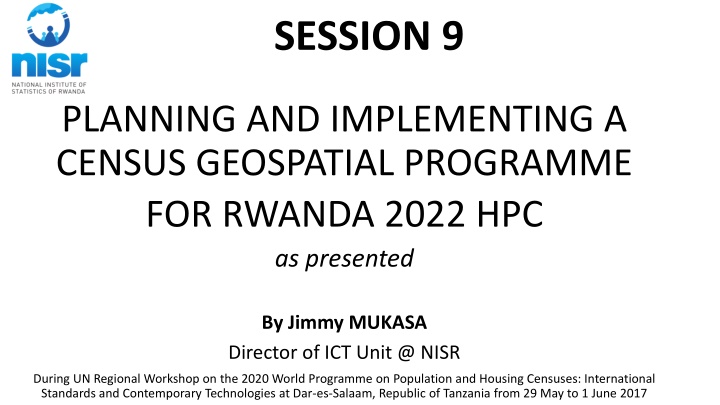
Implementing a Geospatial Census Programme for Rwanda 2022
Explore the planning and implementation of a geospatial census programme for Rwanda in 2022, including evaluating previous census data, utilizing high-resolution imagery, planning for imagery acquisition, and GIS software and hardware considerations. Learn from the insights shared by Jimmy Mukasa at a UN workshop in Tanzania.
Download Presentation

Please find below an Image/Link to download the presentation.
The content on the website is provided AS IS for your information and personal use only. It may not be sold, licensed, or shared on other websites without obtaining consent from the author. If you encounter any issues during the download, it is possible that the publisher has removed the file from their server.
You are allowed to download the files provided on this website for personal or commercial use, subject to the condition that they are used lawfully. All files are the property of their respective owners.
The content on the website is provided AS IS for your information and personal use only. It may not be sold, licensed, or shared on other websites without obtaining consent from the author.
E N D
Presentation Transcript
SESSION 9 PLANNING AND IMPLEMENTING A CENSUS GEOSPATIAL PROGRAMME FOR RWANDA 2022 HPC as presented By Jimmy MUKASA Director of ICT Unit @ NISR During UN Regional Workshop on the 2020 World Programme on Population and Housing Censuses: International Standards and Contemporary Technologies at Dar-es-Salaam, Republic of Tanzania from 29 May to 1 June 2017
EVALUATING WHAT WE HAVE FROM THE PREVIOUS CENSUS PRE-ENUMERATION EXERCISE For the 2012 Population and Housing Census, the census mapping carried during a period of one year provided: A full DB of administrative boundaries, form the lowest level (village) An approximate number of HHs based on estimation by village elders Point infrastructure and important land marks coordinates to guide enumerators Enumeration area were then delineated according to administrative units (village) and the estimate number of household within a village. A village could be divided into one or more EA depending on its estimated number of households
GETTING BETTER LAND IMAGERY Use of High resolution images: High resolution images are crucial to guide enumerators along their enumeration area. They will be used to: A. Create dot houses to every roof that can be seen on the image. Database of Dot houses will be used: a. To determine he approximate number of dwelling units by administrative unit (village) b. Creating a high resolution density maps to help in the classification of urban/rural B. As a background for each EA map to be given to every enumerator
PLANNING FOR THE ACQUISITION OF IMAGERY Nowadays, satellite images are available via subscription services on cloud hosted platforms and accessed via web or end user software. EX: Digital globe Easy to set specs, 4 months procurement time, immediate delivery, 3 years subscription, budget per country size Portion of Kigali city with a 50 cm resolution image from Digital Globe cloud service
PLANNING FOR GIS SOFTWARE AND HARDWARE GIS software (Office) The most challenge about GIS software is the cost. However, nowadays some are free like QGIS. For some simple tasks like digitizing houses qGIS is just enough. Some complex task can be run with ArcGIS software and we need as much licenses for office work as we have number of GIS staff
PLANNING FOR GIS SOFTWARE AND HARDWARE GIS software (field) There are many application for mapping, some are free and others not. The most important features are: Capacity to collect point, line and polygon Syncing with a remote server Custom form for collecting attribute Collecting and storing GPS metadata (like accuracy and time) Reading offline base maps (PDF or any other format) Some app today have some of the features, like collector for ArcGIS with Survey123, Avenza Maps we used for EICV5 that help enumerators to read EA maps on mobile devices.
USE OF THE TOOLS Determination of EA The sense of EAs is to have small geographic units which are homogenous in term of the number of household to enumerate during the census and clear boundaries. From a set of digitized houses from Satellite images, GIS software creates algorithms which look along existing points and allocate neighboring ones to an individual group. The algorithms creates a new Group Unique ID and attaches it to each single point. The user determine how big the group must be (ex 100 houses)
BUDGETING, STAFFING AND LOCAL PARTNERSHIP Previous census mapping budget = about 1.75 Million USD = 9% of total Census budget We expect it to reduce Five Permanent staff Four Temporary staff Eight Paid Interns

